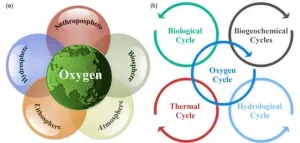(Press-News.org) EUGENE, Ore. -- April 2, 2021 -- Across California's Central Valley, under stress from large-scale agriculture and climate change, native bee species that are flexible in their pollination behavior when around other wild bee populations appear best suited for survival in shrinking habitats.
That's the primary finding of a study published online April 1 in the journal Nature Ecology & Evolution.
A research team led by University of Oregon biologist Lauren C. Ponisio
identified 1,150 network interactions involving 157 wild bee species and 152 plant species at 63 sites spread across three counties. The findings emerged from observations of adult bees from 31 species whose pollination activities with at least five plants overlapped during multiple crop-growing seasons.
"We looked at the ability of these bees to change their roles in these plant-pollinator interaction networks," Ponisio said. "This ability proved to be important for which species persisted in the landscape as well as for the higher number of habitat patches being occupied."
An important behavior tied to that vitality was the ability of some wild bee species that chose plants being less targeted for pollination by competing species, said the study's lead author, Marilia P. Gaiarsa, who was a postdoctoral researcher in Ponisio's former lab at the University of California, Riverside.
Ponisio joined the UO's Data Science Initiative in July 2020 as an assistant professor in the Department of Biology and member of the Institute of Ecology and Evolution. Gaiarsa now is a Marie Sklodowska-Curie Fellow at the University of Zurich, where she is studying the response of species interactions to climate change.
"In the Central Valley, there are areas of intensive industrial agriculture, monocultural farming, that are experiencing a 90 percent habitat loss for native bees," Ponisio said.
Understanding what factors promote ecosystem health and ecosystem services, such as pollination, Gaiarsa said, is vital for helping species that are facing extinction from various extinction drivers such as intensive agriculture, deforestation and climate change.
"One way to turn around these negative effects is through the process of ecosystem restoration," she said. "By going into a degraded area and planting native plants known to be important resources for bees, we can restore some of the lost interactions and potentially restore the populations of these species."
The valley is a product of large land grants purchased for farming years ago. Large single-crop enterprises dominate the fertile land. Over time, hedgerows were added between some farms to restore patches of native plants that support native species, especially bees crucial to crop pollination. Bees, in turn, need nectar from the plants for nutrition.
Hedgerows observed in the study were created by planting flowers along the margins of fields more than a decade ago in a project led by study co-author Claire Kremen, Ponisio's doctoral adviser at the University of California, Berkeley.
"At these hedgerows there are tiny patches of bee populations in these seas of monoculture agriculture," Ponisio said. "Some colonize these patches; others go live in them for a while but eventually go extinct."
By looking into the population dynamics of different species, the research team sought to understand if different species visited different habitat patches and, in turn, how well they were able to persist on the landscape. Occupation of different patches, Gaiarsa said, should increase the number of interactions at each site and potentially increase plant diversity and overall ecosystem health.
"If a particular bumblebee species pollinates several plants that are only pollinated by a couple of other bee species, maybe that bumblebee species will be able to colonize more habitat patches because there may be very little competition with other bees for its plant resources," she said.
INFORMATION:
The Army Research Office, National Science Foundation and U.S. Department of Agriculture's Natural Resources Conservation Service and National Institute of Food and Agriculture supported the project. Gaiarsa was supported by a University of California, Riverside Chancellor's Fellowship.
Links:
Paper in Nature Ecology & Evolution:
https://www.nature.com/articles/s41559-021-01434-y
About Lauren Ponisio:
http://www.ponisiolab.com/members.html
Ponisio Lab:
http://www.ponisiolab.com/
Institute of Ecology and Evolution:
https://ie2.uoregon.edu/
Department of Biology:
https://biology.uoregon.edu/
Data Science Initiative:
https://datascience.uoregon.edu/
About Marilia Gaiarsa:
https://mariliagaiarsa.weebly.com/
FINDINGS
A UCLA research team has shown that using a truncated form of the CD4 molecule as part of a gene therapy to combat HIV yielded superior and longer-lasting results in mouse models than previous similar therapies using the CD4 molecule.
This new approach to CAR T gene therapy -- a type of immunotherapy that involves genetically engineering the body's own blood-forming stem cells to create HIV-fighting T cells -- has the potential to not only destroy HIV-infected cells but to create "memory cells" that could provide lifelong protection from infection with the virus that causes AIDS.
BACKGROUND
CAR therapies have emerged as a powerful immunotherapy for various forms of cancer and show promise ...
As an essential material for the survival and reproduction of almost all aerobic organisms, oxygen is closely related to the formation and development of complex organisms. A recent review provides a systematic overview of the latest advances in the oxygen cycle at different spatial and temporal scales and the important role that oxygen plays in shaping our current habitable Earth.
Professor Jianping Huang from Lanzhou University is the corresponding author of the review entitled "The oxygen cycle and a habitable Earth", which is the cover article of the 64(4) of SCIENCE CHINA Earth Sciences in 2021.
Based ...
BOSTON - In the first study to use whole genome sequencing (WGS) to discover rare genomic variants associated with Alzheimer's disease (AD), researchers have identified 13 such variants (or mutations). In another novel finding, this study establishes new genetic links between AD and the function of synapses, which are the junctions that transmit information between neurons, and neuroplasticity, or the ability of neurons to reorganize the brain's neural network. These discoveries could help guide development of new therapies for this devastating neurological condition. Researchers at Massachusetts General Hospital (MGH), the Harvard T. H. Chan School of Public Health, and Beth Israel Deaconess Medical Center report these findings in Alzheimer's & Dementia: The Journal of the Alzheimer's Association.
Over ...
Bottom Line: Among patients at high risk of melanoma, those who received routine skin cancer screening and education about skin self-exams were significantly more likely to be diagnosed with thinner and earlier stage melanomas.
Journal in Which the Study was Published: Cancer Epidemiology, Biomarkers & Prevention, a journal of the American Association for Cancer Research
Author: Michael Sargen, MD, a dermatologist and clinical fellow in the Division of Cancer Epidemiology and Genetics at the National Cancer Institute (NCI), part of the National Institutes of Health (NIH)
Background: "Whole-body screening for melanoma is currently routine for individuals at high ...
The Tibet ASγ experiment, a China-Japan joint research project on cosmic-ray observation, has discovered ultra-high-energy diffuse gamma rays from the Milky Way galaxy. The highest energy detected is estimated to be unprecedentedly high, nearly 1 Peta electronvolts (PeV, or one million billion eV).
Surprisingly, these gamma rays do not point back to known high-energy gamma-ray sources, but are spread out across the Milky Way (see Fig.1).
Scientists believe these gamma rays are produced by the nuclear interaction between cosmic rays escaping from the most powerful galactic sources ...
A dangerous toxin has been witnessed - for the first time - releasing into the air from pond scum, research published in the peer-reviewed journal Lake and Reservoir Management today shows.
Not only is pond scum - otherwise known as algal bloom - an unsightly formation which can occur on still water across the world, it can also prove dangerous to wildlife and humans.
For the first time, scientists have now detected the presence of the algal toxin anatoxin-a (ATX)which is also known as 'Very Fast Death Factor', in the air near a Massachusetts pond with large algal blooms.
ATX can cause a range of symptoms at acute doses, including loss of coordination, muscular twitching and respiratory paralysis, and has been linked to the deaths of livestock, waterfowl and dogs from ...
Researchers from University of Queensland, University of Melbourne, and Universidad Finis Terrae published a new paper in the Journal of Marketing that studies consumer resistance to a nationwide plastic bag ban implemented in Chile in 2019.
The study, forthcoming in the Journal of Marketing, is titled "How Do I Carry All This Now?': Understanding Consumer Resistance to Sustainability Interventions" and is authored by Claudia Gonzalez-Arcos, Alison M. Joubert, Daiane Scaraboto, and Jörgen Sandberg.
As environmental crisis challenges accelerate, governments are searching for solutions to reduce the negative impacts of economic activity. One popular measure has been to ban disposable plastic ...
A palliative care doctor has suggested that studying Shakespeare's plays could help medical students connect more closely with their patients. Writing in the Journal of the Royal Society of Medicine Dr David Jeffrey, of the Department of Palliative Medicine at the University of Edinburgh, investigates how the playwright's empathic approach - the ability to understand and share the feelings of another - can enhance the patient-doctor relationship.
Dr Jeffrey writes that the idea that emotions are disruptive and need to be controlled is deeply ingrained in medical education and practice, contributing to doctors distancing from patients. The coronavirus pandemic, with ...
Fewer than half of inmates in jails and prisons surveyed in a study by the CDC and University of Washington said they would accept a COVID-19 vaccine, while the majority either said they wanted to wait before getting the vaccine or would refuse one.
"This is a population already at risk for COVID-19, and outbreaks among incarcerated people can worsen inequities in COVID-19 outcomes as well as contribute to spread in the surrounding community," said lead author Dr. Marc Stern, affiliate assistant professor of health services in the UW School of Public Health. "So culturally and health-literacy informed interventions are needed to help them feel more confident about getting vaccinated."
The study conducted by CDC researchers ...
As the COVID-19 pandemic lingers, researchers have found associations between certain lifestyle factors and a person's risk of getting infected. While it has already been established that those with Type II diabetes and a high body mass index (BMI) are at greater risk of experiencing hospitalizations and other severe complications related to COVID-19, they are also at greater risk of getting symptomatic infection in the first place. That is the finding of a recent study conducted by researchers at the University of Maryland School of Medicine that was published today in the journal PLoS ONE.
Using data from the UK Biobank of 500,000 British volunteers over age 40, the researchers examined ...

